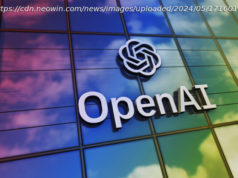By Ralph Haupter, President, Microsoft Asia. This article was originally posted on LinkedIn. If the history of human advancement has taught us one thing it is this: genuine step-change progress does not occur because of a single technology breakthrough, but a combination of multiple complementary factors coming together at the same time.… Read more »
By Ralph Haupter, President, Microsoft Asia. This article was originally posted on LinkedIn.
If the history of human advancement has taught us one thing it is this: genuine step-change progress does not occur because of a single technology breakthrough, but a combination of multiple complementary factors coming together at the same time.
The Industrial Revolution, which began in the UK around 1760, was driven by an amalgamation of steam power, improvements in iron production and the development of the first machine tools.
Similarly, the PC revolution of the early 1970’s was the outcome of simultaneous advancements in micro-processing, memory storage, software programming and other factors.
Now, as we enter 2018, we are at the cusp of a new revolution, one that will ultimately transform every organisation, every industry and every public service across the world.
I’m referring, of course, to Artificial Intelligence – or AI – and I believe 2018 is the year that this will start to become mainstream, to begin to impact many aspects of our lives in a truly ubiquitous and meaningful way.
AI: Over 65 Years In The Making The concept of AI is not new. In fact, it stretches back to 1950 when early computing pioneer Alan Turing famously posed the question “Can Machines Think?” and it would be another 6 years, in 1956, before the term “artificial intelligence” was first used.
So it has taken nearly 70 years for the right combination of factors to come together to move AI from concept to an increasingly ubiquitous reality. And there are three innovation trends driving its acceleration and adoption right now.
So, it is this combination of powerful industry trends, all maturing at the same time, that is accelerating – and democratizing – AI today.
AI Everywhere My colleague Harry Shum, who leads our AI & Research Group, refers to the way in which AI will impact our lives as an “invisible revolution”. What he means is that, increasingly, AI will be everywhere—powering your online recommendation engine, acting as a virtual assistant chatbot for your bank account or travel agent, personalizing your newsfeed or guarding your credit card against fraud. AI will be more pervasive – and yet less invasive – than any previous technology revolution.
In particular, AI will be embedded seamlessly into existing, well-established products and services to enhance their capabilities. Let me share a simple example of how AI is helping me work more effectively today. I travel frequently and am often required to present to multinational, multilingual audiences during business trips across Asia Pacific. Now, with a small piece of AI technology called Microsoft Presentation Translator, I can help overcome any language barriers as PowerPoint can show real-time subtitles in more than 60 languages, simultaneously as I speak, during my presentations.
In business, AI will be used by most companies for at least some part of the value chain either in research and development, design, logistics, manufacturing, servicing or customer engagement. In fact, leading IT industry analyst IDC believes that by next year, 40% of digital transformation initiatives globally will be supported by AI capabilities [1].
And you do not need to be a start-up or hi-tech company to embrace the possibilities of AI, just have the vision and commitment to make it happen. Take, for example, Mitsubishi Fuso Truck and Bus Corporation (MFTBC), an 85-year-old Japanese auto manufacturer, which has given itself just two years to become a “100% digital operation” – complete with cloud-based capabilities in AI, the Internet of Things (IoT), and Mixed Reality (MR).
One of the initiatives they have recently implemented is an AI-powered chatbot where all its 10,000 employees can access information and assistance they need in a faster, more intuitive and reliable way. This significantly reduces the time employees spend on learning the Intranet site navigation, searching for information or calling each other for help. The company is now planning to extend chatbot technology to boost customer services, productivity, and maintenance across the whole company.
AI in 2018 As we stand at the cusp of the new year, I see four key AI developments happening over the next 12 months:
The future of AI burns brightly and I see 2018 as the year that will establish a solid foundation for the mass adoption of this exciting and vital technology.
[1] IDC Reveals Worldwide Digital Transformation Predictions, Nov 2017
[2] IDC, Worldwide Spending on Cognitive and Artificial Intelligence Systems Forecast to Reach $12.5 Billion This Year, According to New IDC Spending Guide, April 2017
[2] https://www.forbes.com/sites/ciocentral/2011/09/27/customers-dont-want-to-talk-to-you-either/#ff504bc70dcd






